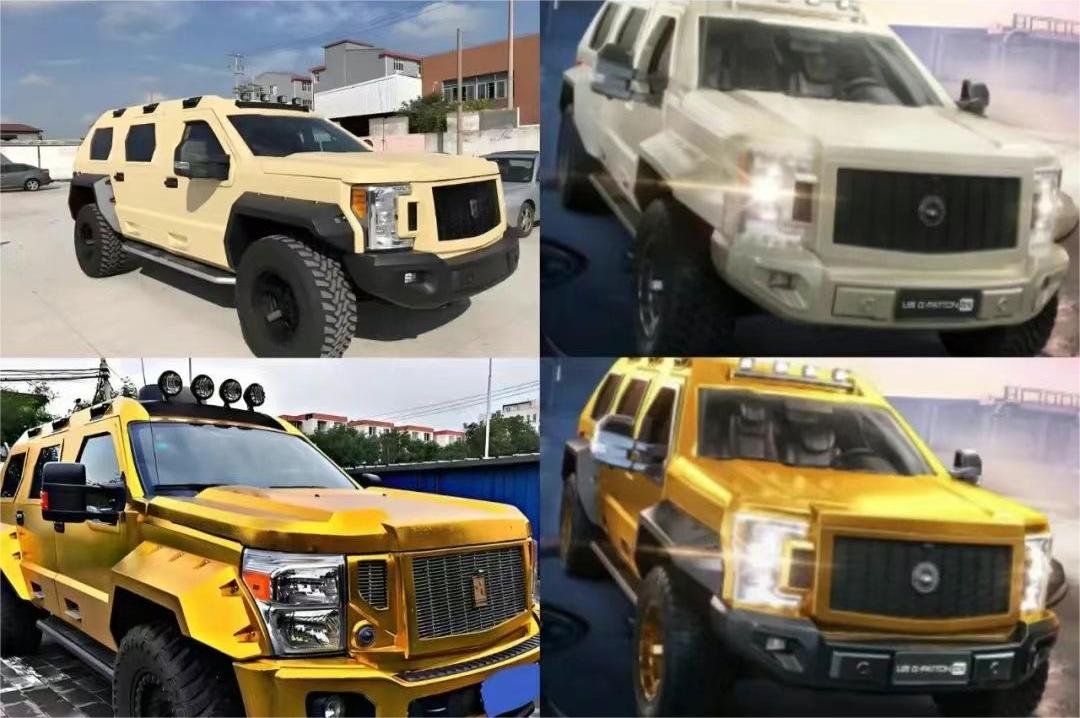
Comparison of Authentic(left) vs. Infringing Virtual Models(right)
On July 21, 2025, the Hangzhou Intermediate People's Court issued a landmark second-instance decision in a trademark infringement and unfair competition case involving the "G. Patton" brand, reversing the initial ruling. The court found the defendants—Shanghai G-Peak Industrial Co., Ltd. and its affiliates—liable for both trademark infringement and unfair competition, ordering them to pay 1 million RMB in compensation.
This case represents a legal milestone as the first to recognize virtual items in a game as products similar to their real-world counterparts. The court ruled that by authorizing a third party (Tencent) to incorporate a virtual "G. Patton" car into the game Game for Peace—which closely resembled the actual G. Patton vehicle—the defendants had committed trademark infringement, as the virtual and physical cars were deemed similar products.
Xuanwo Company, owner of the "G. Patton" trademark, claimed that the defendants collaborated with Tencent to promote the brand in the game by embedding the virtual car and using related trademarks in marketing campaigns. The central question was whether this constituted infringement.
In its reasoning, the court acknowledged that virtual cars and real vehicles fall under different trademark categories—Class 12 covers physical automobiles, not digital representations. However, it emphasized that for trademarks with commercial recognition, assessing product similarity requires a nuanced evaluation of their relationship.
In this case, although the virtual car differed from its real-world counterpart in function, usage, production, sales channels, and target consumers, the court identified meaningful overlaps:
Function and usage: The in-game vehicle allows players to travel quickly or participate in races, mirroring the real car's transport function. Its detailed design—replicating the appearance, interior, and even engine sounds of the physical model—created a strong visual association.
Sales channels and target consumers: While real cars target buyers through dealerships, the virtual version targets gamers. However, the court noted that gamers' exposure to the virtual brand could spark interest in the actual product, creating consumer overlap.
Public perception: The defendants licensed detailed vehicle attributes—name, logo, design, and engine sounds—for use in Game for Peace, where the virtual car replicated both the appearance and transport function of its physical counterpart. Promotional materials reinforced this connection by labelling the game as "officially licensed," claiming to "accurately recreate" the real vehicle, and grouping G. Patton with luxury brands like Maserati and Tesla. These actions misleadingly suggested official authorization from the trademark owner, Xuanwo Company, whose mark held distinctiveness and market recognition. Despite differences between virtual and physical goods, the court found that such use severed the trademark's link to Xuanwo and constituted infringement.
This ruling sets a critical precedent for intellectual property protection in virtual environments. As concepts like the metaverse and digital twins gain traction, brand digitization is inevitable. The decision reaffirms that trademark rights extend into digital spaces, urging brand owners to include virtual realms in their protection strategies. It also signals to potential infringers that the virtual world is not beyond the reach of the law. Ultimately, this case is expected to encourage more standardized and orderly collaboration in the digital brand economy.


